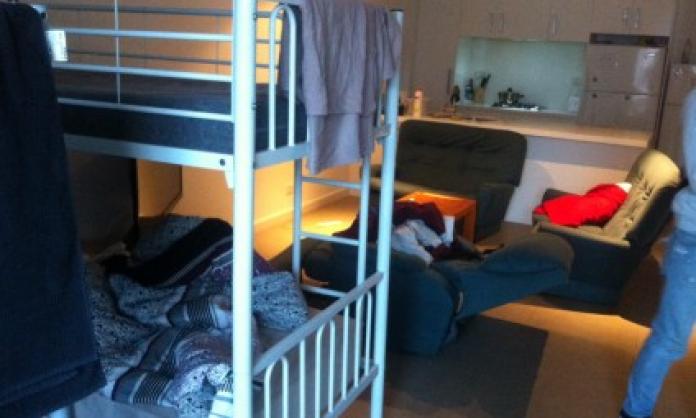When Nepalese student Praisda Neupane arrived in Perth last month to start a master’s degree in environmental engineering, he expected to quickly settle into his pre-booked accommodation. Instead, he discovered that it did not exist. “I couldn’t find the address [on a map]”, he told the ABC.
Neupane’s story epitomises the housing crisis facing university students, many of whom cannot secure a place to stay—let alone one that is affordable. As it stands, nineteen students compete for every bed available in purpose-built student accommodation, according to the sector’s chief lobby group, the Student Accommodation Council.
The situation led the Western Australian government and student housing networks to launch a campaign late last year calling on ordinary people to house students, particularly international students, facing homelessness. The pleas have since grown more desperate: management at both Curtin University and the University of Western Australia are now imploring staff to host international students.
Student representatives from Perth-based universities have even demanded that the newly built and currently unused $200 million Bullsbrook quarantine facility—which is 50 kilometres away from UWA and eight kilometres from the nearest grocery shop—be turned into student housing.
As universities phase out remote learning, and international students resume on-campus study, the housing shortage is about to worsen. In response to the Chinese government’s recent decision to cease recognising degrees taught remotely, around 40,000 students from China are expected to settle in Australia by the end of the month and compete for scant accommodation.
For the few able to secure student accommodation, any sense of relief is likely to be offset by the reality of eye-wateringly high rents. In Melbourne, a large studio apartment in the prime location of Swanston Street costs $759 a week through Scape, Australia’s biggest student accommodation operator. This is $300 more than equivalent rentals advertised on commercial real estate sites, and 57 percent higher than Melbourne’s median weekly rental rate of $482 per week.
Where “cheaper” studio apartments exist, such as those available for rent in central Melbourne for at least $509 per week from another large student accommodation provider, they are advertised with “opening windows” as noteworthy features.
Sharing a unit makes little difference. A single bed in an eight-person Scape apartment close to the Melbourne CBD costs at least $477 per week. A single room in a five-bedroom apartment at Scape Redfern, Sydney, costs $569 a week.
Students looking for housing on the private rental market can hardly hope to fare better. Prices on average are lower than the exorbitant rates charged by opportunistic student accommodation providers, but they have increased 37 percent in three years and are still rising. Vacancy rates have fallen to a record low of 0.8 percent as of January.
Indeed, the competitive nature of the rental market has spawned another market for intermediary businesses to profiteer off students’ basic need for shelter, with international students particularly at risk of predatory behaviour.
The experience of Ms Chen, an international student from Guangzhou, China, is illustrative. After unsuccessfully applying for more than twenty rental properties, she resorted to paying an agency $550 to organise a rental on her behalf. The agency then demanded three months’ rent and bond, totalling $8,692, to secure a one-bedroom apartment.
“I would definitely [consider] such demands to be unreasonable in the past”, she told SBS. “But now I’m in the passive position of desperately needing a house; I have to do whatever I’m required to do.” The agency, she later found out, had not even inspected the apartment.
The interplay between a generalised rental shortage, rising costs of living, an already exhausted stock of purpose-built student accommodation—on top of higher tuition fees and perilously low social welfare, for the domestic students actually able to access it—is creating a student lifestyle sharply at odds with the image curated by university marketing departments.
For their part, universities have worsened the housing crisis by selling their limited accommodation to private providers during the pandemic. In 2021, the University of Wollongong sold two major housing assets. The University of Technology Sydney sold three accommodation buildings for an estimated $95 million. The University of Sydney sold more than $70 million of property. In these cases, private companies have inflated rental prices for exactly the same units.
To the extent that university bosses care about the crisis, it is only because they fear that shortages could jeopardise the Australian tertiary sector’s international attractiveness, prompting students to pursue degrees elsewhere.
Measures that would make a difference for students—government-imposed rent caps, heavily subsidised, university-owned student accommodation, higher and more accessible social welfare—are barely part of the discussion because they run counter to capitalist “common sense”. We can’t fix the student housing crisis without challenging this common sense.
Student activists and unionists have started the Get a Room campaign to demand action on the housing crisis. Follow the campaign and get involved: facebook.com/fixtherentalcrisis.








